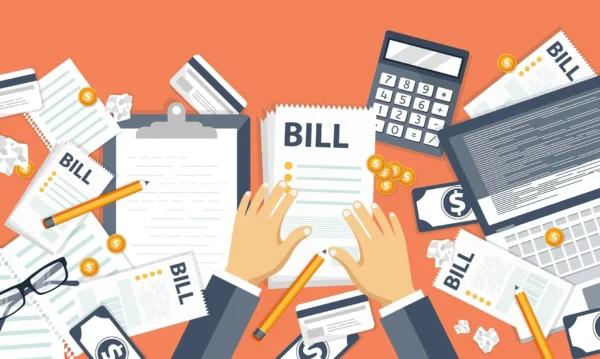Introduction:
In the realm of managing household expenses, utility bills play a pivotal role. However, many individuals find themselves puzzled by the intricacies of these bills. This article aims to unravel the mystery behind utility bills, providing a comprehensive understanding of what they are and presenting some common examples. For More Info Visit Here
What is a Utility Bill?
A utility bill is a statement issued by a service provider, detailing the charges incurred for essential services such as electricity, water, gas, or other public services. These bills serve as a financial record of the consumption of these services within a specific period.
Components of a Utility Bill:
Understanding the components of a utility bill is crucial for deciphering the charges imposed. The main elements typically included in a utility bill are:
Account Information:
The bill starts with essential details, such as the account holder’s name, address, and account number. This information ensures accurate identification and linkage to the respective service.
Billing Period:
Utility bills cover a specific timeframe, usually a month or a billing cycle. The billing period indicates the duration for which the services were provided and the subsequent charges incurred.
Meter Readings:
For services like electricity and gas, the bill often includes meter readings. These readings represent the amount of the service consumed during the billing period. The difference between current and previous readings determines the usage.
Usage Charges:
Usage charges are the heart of a utility bill. They represent the cost incurred for the actual consumption of a service. The rates may vary depending on the service provider, location, and consumption levels.
Fixed Charges:
In addition to usage charges, some utility bills include fixed charges. These are consistent fees that account for service availability, infrastructure maintenance, and other fixed costs.
ALSO READ ABOUT: Emblem Provider Portal Unveiled: A Comprehensive Guide
Utility Bill Examples:
To delve deeper into the world of utility bills, let’s explore some common examples:
- Electricity Bill: An electricity bill typically includes details about the energy consumed, measured in kilowatt-hours (kWh). The charges encompass both usage-based fees and fixed charges. Many electricity bills also feature a breakdown of usage patterns to encourage energy conservation.
- Water Bill: Water bills are based on the volume of water consumed, usually measured in cubic meters or gallons. They may also include sewage charges or additional fees for water treatment and distribution.
- Gas Bill: Gas bills measure the consumption of natural gas and include charges based on the amount used. Similar to electricity bills, they may also incorporate fixed charges for service provision.
- Internet and Cable Bill: Telecommunication bills encompass charges for internet, cable TV, and phone services. They detail the subscribed plans, usage, and any additional services. Understanding the bill is crucial for optimizing service plans and minimizing costs.
- Property Tax and Municipal Services: Some utility bills extend beyond basic services to encompass property taxes and municipal services like waste management. These bills contribute to the overall cost of residing in a particular locality.
Tips for Managing Utility Bills:
Efficiently managing utility bills is essential for maintaining financial stability. Here are some tips to navigate this aspect of household finance:
- Regularly Monitor Usage: Keep a close eye on your energy, water, and gas consumption. Regular monitoring allows you to identify unusual spikes in usage and take corrective measures.
- Explore Energy-Saving Measures: Implement energy-saving practices to reduce consumption and lower utility bills. This may include using energy-efficient appliances, turning off lights when not in use, and properly insulating your home.
- Understand Tariffs and Rates: Familiarize yourself with the tariff structures and rates applied by your service providers. This knowledge empowers you to make informed decisions about your usage patterns.
- Optimize Service Plans: Review your internet, cable, and phone plans regularly. Ensure that the services subscribed align with your actual needs, avoiding unnecessary costs.
- Set Up Automated Payments: Consider setting up automated payments to avoid late fees and ensure timely bill payments. Many service providers offer discounts for automated billing.
Conclusion:
Utility bills may appear daunting at first glance, but breaking down the components and understanding the specifics of each service can empower individuals to take control of their household expenses. By staying informed, monitoring usage, and implementing cost-saving measures, managing utility bills becomes a more straightforward and efficient task.



